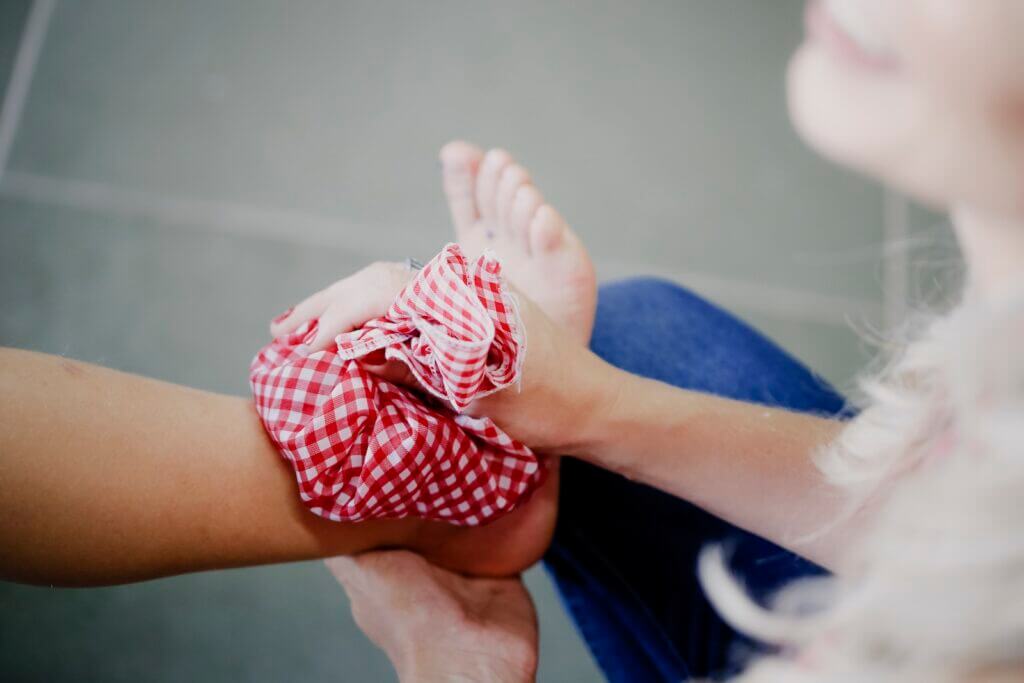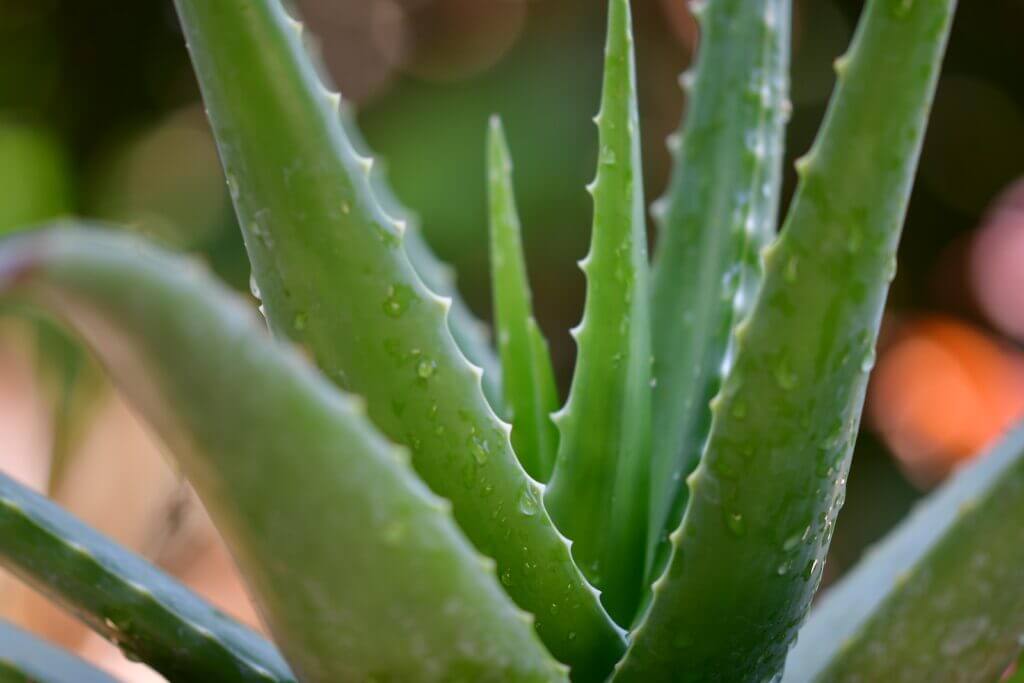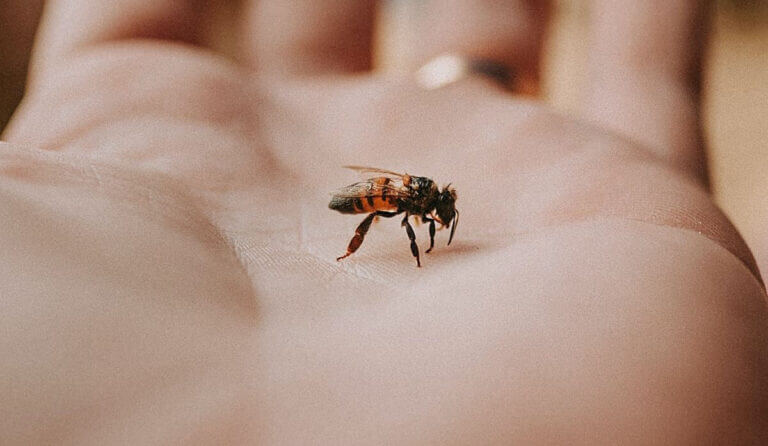Explore the dissimilarities between hornet and wasp stings, from their types and venom composition to their sting mechanism. Discover how to identify signs, symptoms, and treatment options, and learn effective tips and natural remedies for relieving hornet and wasp sting symptoms.
Differences between Hornet and Wasp Stings
Hornets and wasps are both stinging insects that belong to the same family, Vespidae. While they may appear similar to the naked eye, there are some key differences between their stings that can help us identify and understand these creatures better.
Here’s a table summarizing the differences between hornet and wasp stings:
| Aspect | Hornets | Wasps |
|---|---|---|
| Types | Asian giant hornet, European hornet, bald-faced hornet, etc. | Yellow jackets, paper wasps, mud daubers, etc. |
| Venom Composition | Contains potent venom with histamines, acetylcholine, and serotonin | Less potent venom with proteins and enzymes |
| Sting Mechanism | Smooth stinger, can sting multiple times without losing the stinger | Barbed stinger, can only sting once before losing the stinger |
| Pain and Allergic Reactions | Intense pain, greater risk of severe allergic reactions | Less intense pain, lower risk of severe allergic reactions |
| Size and Aggressiveness | Larger and more aggressive | Smaller, generally less aggressive |
Types of Hornets and Wasps
Before delving into the differences in their stings, it’s important to first understand the various of hornets and wasps that exist. Hornets are a type of wasp, but they are larger and more aggressive than their counterparts. Some common of hornets include the Asian giant hornet, European hornet, and bald-faced hornet. On the other hand, wasps come in various species, including yellow jackets, paper wasps, and mud daubers.
Venom Composition
One significant difference between hornet and wasp stings lies in the composition of their venom. Hornets, being larger and more aggressive, have a venom that is more potent and can cause greater pain. The venom of hornets contains a mixture of chemicals, including histamines, acetylcholine, and serotonin. These substances contribute to the intense pain experienced when stung by a hornet. Wasps, on the other hand, have a venom that is less potent but can still cause discomfort and allergic reactions in some individuals.
Sting Mechanism
Another difference between hornet and wasp stings lies in the way they deliver their venom. Hornets have a smooth stinger, which allows them to sting their victims multiple times without losing their stinger. This means that a hornet can sting repeatedly, injecting more venom with each sting. Wasps, on the other hand, have barbed stingers. When a wasp stings, its stinger gets lodged in the victim’s skin, causing the wasp to lose its stinger and eventually die. This means that a can only sting once before losing its stinger.

Understanding these differences between hornet and wasp stings can help us identify the insect responsible for a sting and provide appropriate treatment accordingly. It’s important to note that both hornet and wasp stings can cause pain, swelling, and allergic reactions in some individuals. Therefore, it’s crucial to be aware of the signs and symptoms associated with these stings to ensure prompt and effective treatment.
Now that we have explored the differences between hornet and wasp stings, let’s move on to the next section to learn more about the signs and symptoms associated with these stings.
Signs and Symptoms of Hornet and Wasp Stings
Hornet and wasp stings can be quite painful and may lead to various symptoms. Understanding the signs and symptoms associated with these stings is crucial for prompt and appropriate treatment. In this section, we will explore the immediate pain and swelling that follows a , as well as the redness and itching that can occur. Additionally, we will discuss the possibility of allergic reactions and their potential severity.
Immediate Pain and Swelling
When a hornet or wasp stings, it injects venom into the skin, which triggers an immediate pain response. The pain can range from mild to intense, depending on the individual’s sensitivity and the location of the sting. For some, the pain may be sharp and burning, while others may experience a dull ache.
In addition to pain, swelling is a common occurrence after a hornet or wasp sting. The venom causes the blood vessels to dilate, leading to an accumulation of fluid in the affected area. This swelling can vary in size and may persist for several hours or even days. It is important to note that swelling near the eyes, throat, or mouth can be particularly concerning and may require immediate medical attention.
Redness and Itching
Alongside pain and swelling, redness and itching are also common symptoms of hornet and wasp stings. The venom released during a sting can cause irritation and inflammation, resulting in the reddening of the skin around the sting site. This redness may be localized or spread to a larger area, depending on the individual’s reaction.
Furthermore, itching is a typical response to a sting. The body’s immune system releases histamines in response to the venom, which can trigger itching sensations. Scratching the affected area should be avoided, as it can lead to further irritation and potential infection. Instead, applying appropriate treatments or remedies can help alleviate the itchiness.
Allergic Reactions
While most hornet and wasp stings result in localized symptoms, some individuals may experience allergic reactions. Allergies to stinging insects vary in severity and can range from mild to life-threatening. It is essential to be aware of the signs of an allergic reaction and seek immediate medical attention if any of these symptoms occur.
Mild allergic reactions may include hives, itching, and swelling in areas distant from the sting site. These symptoms usually resolve within a few hours. However, in severe cases, individuals may experience difficulty breathing, tightness in the chest, dizziness, or a rapid heartbeat. These symptoms indicate a systemic allergic reaction, known as anaphylaxis, which requires immediate emergency medical treatment.
It is important to note that individuals who have experienced severe allergic reactions to hornet or wasp stings in the past are at a higher risk of experiencing similar reactions in the future. These individuals should carry an epinephrine auto-injector (commonly known as an EpiPen) with them at all times and seek immediate medical attention after a sting.
In summary, the signs and symptoms of hornet and wasp stings include immediate pain and swelling, redness and itching, and in some cases, allergic reactions. Understanding these can help individuals identify the severity of a sting and seek appropriate treatment. In the next section, we will explore the various available for hornet and wasp stings.
Treatment Options for Hornet and Wasp Stings
In the unfortunate event of a hornet or wasp sting, it is crucial to act quickly and effectively to minimize pain and potential complications. There are several available, ranging from simple first aid measures to over-the-counter medications and, in severe cases, medical interventions.
First Aid Measures
When stung by a hornet or wasp, immediate first aid measures can provide relief and prevent further aggravation. Here are some important steps to follow:
- Remove the Stinger: After being stung, it is essential to remove the stinger as soon as possible. This can be done by gently scraping it off the skin with a clean, blunt object such as a credit card or the edge of a plastic ruler. Avoid using tweezers or squeezing the stinger, as it can release more venom into the wound.
- Clean the Area: Once the stinger is removed, clean the affected area with mild soap and water. This helps reduce the risk of infection and removes any dirt or bacteria that may have come into contact with the sting.
- Apply a Cold Compress: To alleviate pain and reduce swelling, apply a cold compress or ice pack wrapped in a cloth to the sting site. This helps constrict blood vessels and numb the area, providing immediate relief.
- Elevate the Affected Body Part: If the sting is on a limb, elevate it to help reduce swelling and minimize the spread of venom throughout the body.
Over-the-Counter Medications
In addition to first aid measures, over-the-counter medications can be used to alleviate the symptoms of hornet and wasp stings. These medications are readily available at pharmacies and can help provide relief from pain, itching, and inflammation. Here are some commonly used over-the-counter options:
- Antihistamines: Oral antihistamines, such as diphenhydramine (Benadryl), can help reduce itching and allergic reactions caused by hornet and wasp stings. These medications work by blocking the effects of histamine, a chemical released by the body in response to an allergic reaction.
- Topical Creams and Ointments: Applying over-the-counter creams or ointments containing hydrocortisone or benzocaine can help relieve itching and reduce inflammation at the sting site. These products provide temporary relief and should be used as directed.
- Pain Relievers: Nonsteroidal anti-inflammatory drugs (NSAIDs) like ibuprofen or acetaminophen can be taken orally to reduce pain and inflammation associated with hornet and wasp stings. These medications should be used according to the recommended dosage and guidelines.
Medical Interventions
While most hornet and wasp stings can be effectively managed with first aid measures and over-the-counter medications, there are instances where medical interventions may be necessary. These interventions are typically required in severe cases or when an individual experiences an allergic reaction. Medical interventions for hornet and wasp stings may include:
- Epinephrine (Adrenaline) Injections: In cases of severe allergic reactions, such as anaphylaxis, a shot of epinephrine may be administered to counteract the allergic response. Epinephrine helps relax muscles in the airways, increase blood pressure, and reverse of anaphylaxis.
- Oral Steroids: If an allergic reaction persists or recurs after initial treatment, doctors may prescribe oral steroids to reduce inflammation and suppress the immune response. These medications are typically taken for a short period and gradually tapered off.
- Desensitization Therapy: For individuals with a history of severe allergic reactions to hornet or stings, allergen immunotherapy, also known as desensitization therapy, may be recommended. This involves receiving regular injections of gradually increasing doses of the venom to build tolerance and reduce the risk of future allergic reactions.
It is important to note that medical interventions should only be administered by healthcare professionals and should be sought in cases of severe allergic reactions, multiple stings, or stings in sensitive areas such as the throat or eyes.
By following the appropriate for hornet and wasp stings, individuals can effectively manage the symptoms, alleviate discomfort, and minimize the risk of complications. Remember, is always better than cure, so it is equally important to take necessary precautions to avoid stings in the first place.
Disclaimer: This article is for informational purposes only and should not replace professional medical advice. If you or someone you know experiences a severe allergic reaction or any concerning symptoms after a hornet or wasp sting, seek immediate medical attention.
Prevention and Safety Tips for Avoiding Stings
When it comes to hornets and wasps, is key to avoiding painful stings. By being aware of their behavior and taking necessary precautions, you can greatly reduce the risk of encountering these stinging insects. In this section, we will discuss some effective and safety tips that will help you steer clear of hornets and wasps.
Identifying Nest Locations
One of the first steps in preventing hornet and wasp stings is to identify their nest locations. Hornets and wasps typically build their nests in protected areas, such as trees, shrubs, attics, and even underground. It’s important to be observant and keep an eye out for any signs of nest activity around your home or outdoor spaces.
Here are some signs that may indicate the presence of a hornet or wasp nest:
- Increased insect activity: If you notice a sudden surge in hornets or wasps in a particular area, it could be a sign that there is a nest nearby.
- Visible nests: Some hornet and wasp nests are easily visible, especially those built in trees or on the sides of buildings. They can appear as papery, cone-shaped structures or round, honeycomb-like formations.
- Buzzing sounds: Hornets and wasps are known for their buzzing sounds. If you hear a consistent buzzing noise coming from a specific area, it could be a sign of nest activity.
Once you have identified the nest location, it is important to keep your distance and avoid any actions that may provoke the insects. Disturbing a hornet or wasp nest can lead to aggressive behavior and increase the chances of being stung.
Protective Clothing and Gear
When venturing into areas where hornets and wasps may be present, it is crucial to wear protective clothing and gear. This will act as a barrier between you and the stinging insects, reducing the risk of getting stung.
Here are some recommendations for protective clothing and gear:
- Long sleeves and pants: Wear clothing that covers your arms and legs completely. Opt for lightweight, breathable fabrics to stay comfortable in warm weather.
- Closed-toe shoes: Choose footwear that fully covers your feet, such as sneakers or boots. Avoid wearing sandals or open-toe shoes, as they leave your feet vulnerable to stings.
- Gloves: Consider wearing gloves, particularly when gardening or working in areas where hornets and wasps may be present. Choose gloves made of thick material to provide maximum protection.
- Hats and veils: If you anticipate encountering hornets or wasps in an outdoor setting, wearing a hat with a wide brim or a veil can offer added protection for your head and face.
By wearing the appropriate clothing and gear, you can minimize the exposed areas of your body and reduce the chance of a . Remember, is always better than cure.
Avoiding Provoking Actions
Hornets and wasps can become aggressive if they feel threatened or provoked. To avoid being stung, it is important to know how to conduct yourself around these insects and avoid actions that may provoke them.
Here are some tips to help you avoid provoking hornets and wasps:
- Stay calm and still: If a hornet or wasp is flying near you, try to remain calm and avoid sudden movements. Swatting at the insect or flailing your arms may be perceived as a threat and trigger an attack.
- Do not disturb nests: As mentioned earlier, disturbing a hornet or wasp nest can have severe consequences. Never attempt to remove or destroy a nest on your own. Instead, seek professional help from pest control experts.
- Avoid sweet scents: Hornets and wasps are attracted to sweet scents, so it is advisable to avoid wearing perfumes, lotions, or brightly colored clothing that may attract them.
- Keep food and drinks covered: When dining outdoors, make sure to cover food and drinks to prevent hornets and wasps from being attracted to them. Be particularly cautious with sugary beverages and fruits.
By being mindful of your actions and surroundings, you can greatly reduce the likelihood of being stung by hornets and wasps. Remember, these insects play an important role in the ecosystem, so it is always best to coexist peacefully with them whenever possible.
Recommended Protective Gear
| Item | Description |
|---|---|
| Long sleeves and pants | Clothing that covers arms and legs completely |
| Closed-toe shoes | Footwear that fully covers the feet |
| Gloves | Protective gloves made of thick material |
| Hats and veils | Headgear with a wide brim or a veil for additional protection of the head and face |
When to Seek Medical Attention for a Sting
Severe Allergic Reactions
Severe allergic reactions to hornet and wasp stings can be life-threatening and require immediate medical attention. While most people may experience some pain, swelling, and itching at the site of the sting, individuals with severe allergies can have a much more severe reaction. These reactions, known as anaphylaxis, can involve symptoms such as difficulty breathing, hives or rash, swelling of the face, throat, or tongue, dizziness, rapid heartbeat, and nausea.
If you or someone you know experiences any of these after a hornet or sting, it is crucial to seek medical attention immediately. Anaphylaxis can progress rapidly and may lead to a life-threatening situation if not treated promptly. Emergency medical professionals will be able to administer appropriate treatments, such as epinephrine, to help alleviate the allergic reaction and prevent further complications.
Multiple Stings or Stings in Sensitive Areas
While a single hornet or wasp can be painful and bothersome, multiple stings or stings in sensitive areas can pose a greater risk and necessitate medical attention. If an individual is stung multiple times, particularly by a swarm of hornets or wasps, the venom injected into their body can have a more significant impact. This can lead to a more severe systemic reaction and increase the likelihood of anaphylaxis.
Stings in sensitive areas, such as the throat, mouth, or eyes, can also be cause for concern. These areas are more susceptible to swelling and can quickly become obstructed, leading to difficulty breathing or vision impairment. Seeking prompt medical attention in these situations is crucial to ensure proper evaluation and treatment to prevent any potential complications.
Delayed or Prolonged Symptoms
In some cases, the symptoms of a hornet or wasp sting may not appear immediately but instead manifest hours or even days after the initial sting. Delayed or prolonged symptoms can be a sign of an allergic reaction or secondary infection and should not be ignored. It is important to monitor the affected area closely and seek medical attention if any concerning symptoms arise.
Delayed may include increasing pain, redness, or swelling at the site of the . There may also be the development of a rash or localized heat. These symptoms could indicate an allergic reaction or infection, which may require medical intervention.
If you experience any unusual or concerning symptoms after a hornet or wasp , it is best to consult a healthcare professional. They will be able to assess your condition, provide appropriate treatment, and offer guidance on further care.
Remember, when it comes to hornet and stings, it is always better to err on the side of caution. Seeking medical attention promptly in cases of severe allergic reactions, multiple stings, stings in sensitive areas, or delayed/prolonged symptoms is crucial for your well-being and safety. Your healthcare provider will be able to provide the necessary treatment and ensure that any potential complications are addressed effectively.
Natural Remedies for Relieving Hornet and Wasp Sting Symptoms
Hornet and wasp stings can be quite painful and cause discomfort. While medical interventions and over-the-counter medications are available, there are also natural remedies that can help alleviate the symptoms. In this section, we will explore three effective natural remedies: cold compresses and ice packs, baking soda paste, and aloe vera and calendula treatments.

Cold Compresses and Ice Packs
One of the simplest and most accessible natural remedies for hornet and wasp stings is the use of cold compresses or ice packs. Applying cold to the affected area can help reduce pain, swelling, and inflammation. The cold temperature constricts blood vessels, slowing down the spread of venom and providing relief.
To use cold compresses or ice packs, follow these steps:
- Wrap an ice pack or a bag of frozen vegetables in a thin towel.
- Apply the cold compress directly to the sting site for 10 to 15 minutes.
- Repeat this process every few hours as needed.
Using cold compresses or ice packs can provide immediate relief, especially during the first few hours after a sting. However, it is important to remember not to apply ice directly to the skin to avoid frostbite. Always use a protective barrier, such as a towel or cloth, between the ice pack and your skin.

Baking Soda Paste
Another popular natural remedy for hornet and wasp stings is a baking soda paste. Baking soda, also known as sodium bicarbonate, has alkaline properties that can help neutralize the acidic venom and relieve itching and swelling.
To make a baking soda paste, follow these steps:
- Mix equal parts baking soda and water in a small bowl to form a thick paste.
- Apply the paste directly to the site.
- Leave it on for 15 to 20 minutes.
- Rinse the area with cool water and pat dry.
The alkaline nature of baking soda can help soothe the sting site and reduce discomfort. It is important to note that baking soda paste may not be suitable for everyone, especially those with sensitive skin. If any irritation occurs, discontinue use and try other remedies.

Aloe Vera and Calendula Treatments
Aloe vera and calendula are two natural remedies that have been used for centuries to treat various skin conditions, including insect bites and stings. Both plants possess anti-inflammatory and soothing properties that can provide relief from hornet and stings.
Aloe vera gel can be extracted directly from the plant or purchased in gel form. To use aloe vera gel for sting relief, follow these steps:
- Cut a fresh aloe vera leaf and extract the gel from the inner part.
- Apply the gel directly to the sting site.
- Gently massage the gel into the skin.
- Leave it on for 10 to 15 minutes before rinsing off.
Calendula, also known as marigold, is available in various forms such as creams, ointments, and oils. To use calendula for sting relief, follow these steps:
- Apply a small amount of calendula cream or ointment to the sting site.
- Gently massage it into the skin until fully absorbed.
- Repeat the application two to three times a day.
Both aloe vera and calendula can help reduce inflammation, soothe the skin, and promote healing. They are generally well-tolerated, but it is always recommended to perform a patch test on a small area of skin before applying them to a larger area.
In conclusion, when it comes to relieving hornet and wasp sting symptoms, natural remedies can be a viable option. Cold compresses and ice packs can provide immediate relief by reducing pain and swelling. Baking soda paste can help neutralize venom and alleviate itching. Aloe vera and calendula treatments offer anti-inflammatory and soothing properties, promoting healing of the sting site. Remember to choose the remedy that suits your needs and discontinue use if any adverse reactions occur.







